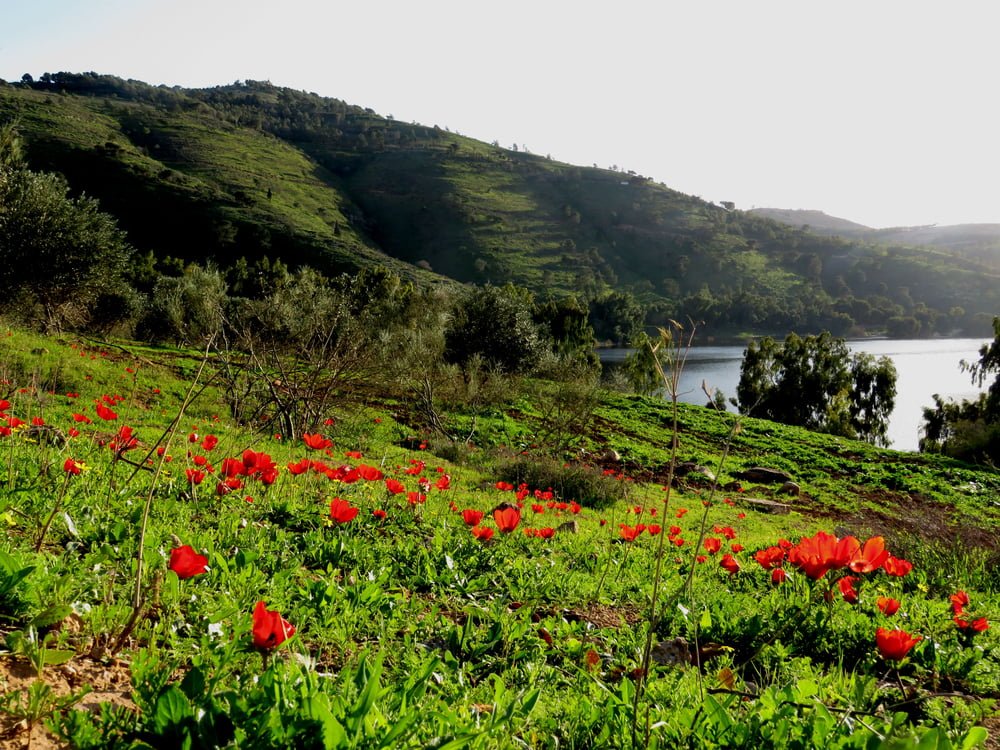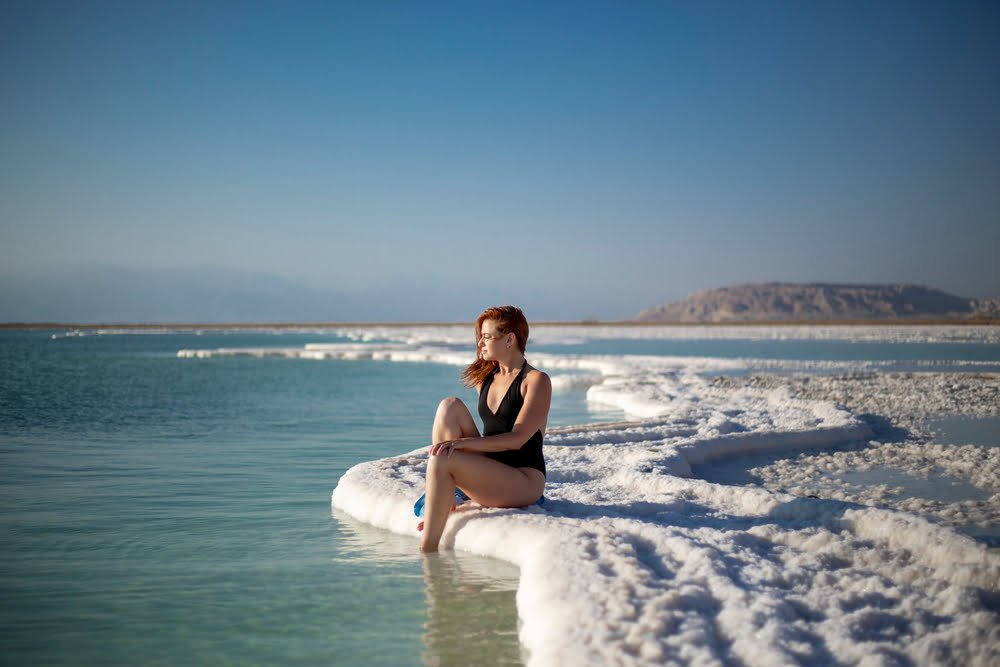Prepare to be amazed by Petra. One of the New 7 Wonders of the World, this attraction has wowed modern-day visitors since the long-lost city’s rediscovery by Swiss explorer Jean Louis Burckhardt more than 200 years ago.
You’ll need at least two days to hit all the highlights around Petra, which include more than 800 registered sites. But if you have more time, you won’t be disappointed spending it here. Wandering around a city this ancient in such a well-preserved state is an experience like none other.

Floating in the Dead Sea is a quintessential thing to do in Jordan. The lowest point on
Earth accessible by road, this body of water is located at 418 meters below sea level.
It practically glows an intense shade of aquamarine – a particularly striking sight next to saltencrusted rock ledges and barren red mountains in the background. You can reach the attractions in the Dead Sea region in about an hour by car from Amman.
The Dead Sea is renowned for its mineral-rich water. Wellness devotees believe the water has healing properties for the skin.
Don’t plan to swim laps, though – the Dead Sea is so dense and salient that all you can really do is float atop the surface. You can access the Dead Sea from a couple of entry points, including Amman Beach. Better yet, splurge on a stay at one of the plush spa resorts on the Dead Sea’s
northeast coast. They typically have private wading areas complete with buckets of Dead Sea mud.
One bath with this red-brown sludge, and your skin will be softer than ever.

Head to the southern region of Jordan, and you’ll be treated to one of the most spectacular landscapes across the globe: Wadi Rum. Also known as the Valley of the Moon, this sandstone and granite rock valley is an otherworldly experience, with towering cliffs, massive dunes, swirling archways, and caverns. It served as the set for much of the 1962 film Lawrence of Arabia and was tagged a UNESCO World Heritage Site in 2011.
Adventure lovers, eat your heart out: The Zalabia Bedouin, a cultural group that lives in the area, have transformed the Wadi Rum into an ecotourism playground. You can ride camels or spirited Arabian horses through the area, strap on a harness and go rock
climbing up the sandstone mountains, hike through canyons, and kick up sand on ATV tours.
Ask your tour guide to take you to the Khazali Canyon, where you can see petroglyphs of
humans and antelopes that may date as far back as the 8th century BC.
Consider spending the night at one of the luxurious “glamping” (glamorous camping)
sites in Wadi Rum. With almost zero light pollution, the park offers incredible stargazing
opportunities. No wonder visiting Wadi Rum is one of the top things to do in Jordan.

You don’t have to go all the way to Petra to see fantastic archeological sites in Jordan. In fact, the capital Amman (where you’ll probably arrive from abroad) is home to a variety of fascinating ruins, many of which are within short walking distance from one another.
Head downtown to see one of the most celebrated ruins: the Amman Citadel. Archeologists have found artifacts around the Citadel that suggest it has been occupied since at least the Bronze Age. Here, you can see the few columns that remain of the amazing Temple of Hercules, a significant Roman structure that was never completed.
Look for the stone sculpture of several fingers, which were once part of a Hercules statue that may have been more than 12 meters tall. It hints at just how majestic this attraction was during its height. One of the top attractions in Amman for history buffs is the Roman Theater. The restored amphitheater, which seats 6,000 people, dates back to when Amman was a Roman-ruled city known as Philadelphia, nearly 2,000 years ago. The attraction is still full of life, hosting many events and welcoming locals and tourists alike. Nearby, tourists can visit the Nymphaeum, a Roman fountain that was built around the same time as the theater, as well as the smaller 500-seat theater, the Odeon.
After getting your fill of the ruins, see the vibrant culture of modern-day Amman with a sightseeing trip along Rainbow Street. The popular promenade boasts atmospheric cafés, fantastic people-watching opportunities, and souvenir shops galore!

Situated just 20 kilometers northwest of Jerash, Ajloun makes a worthwhile trip for tourists who want to see some of the best natural scenery in all of Jordan. Plan to spend a day hiking around the Ajloun Forest Reserve, a 13-square-kilometer expanse of pristine,
open woodlands.
In the spring, the area is blanketed by wildflowers, which makes for spectacular photo opportunities. Keep your eyes peeled for the crested porcupines and striped hyenas that live in the area. Be sure to visit the Ajloun Castle on the summit of Mount Auf. It was built in the 12th century in the footprints of an even older Byzantine monastery to protect against the Crusader attacks. Its mountaintop location offers sweeping views of the Jordan Valley.














“The Art Of Nabataean Romance”
Subscribe now and you’ll receive our gifts and best deals.
2024 © Maranasi. All rights reserved.